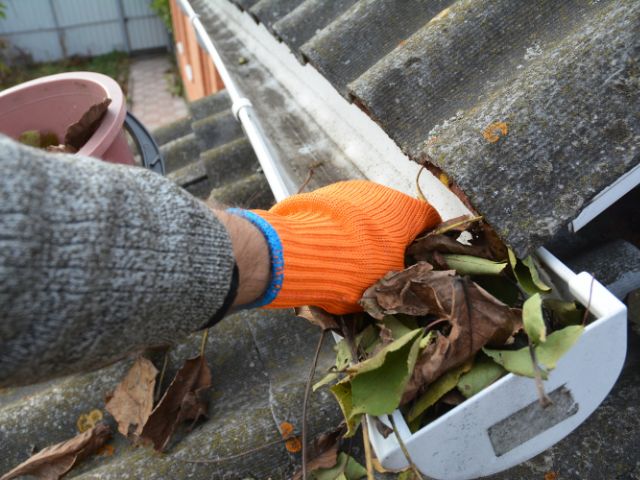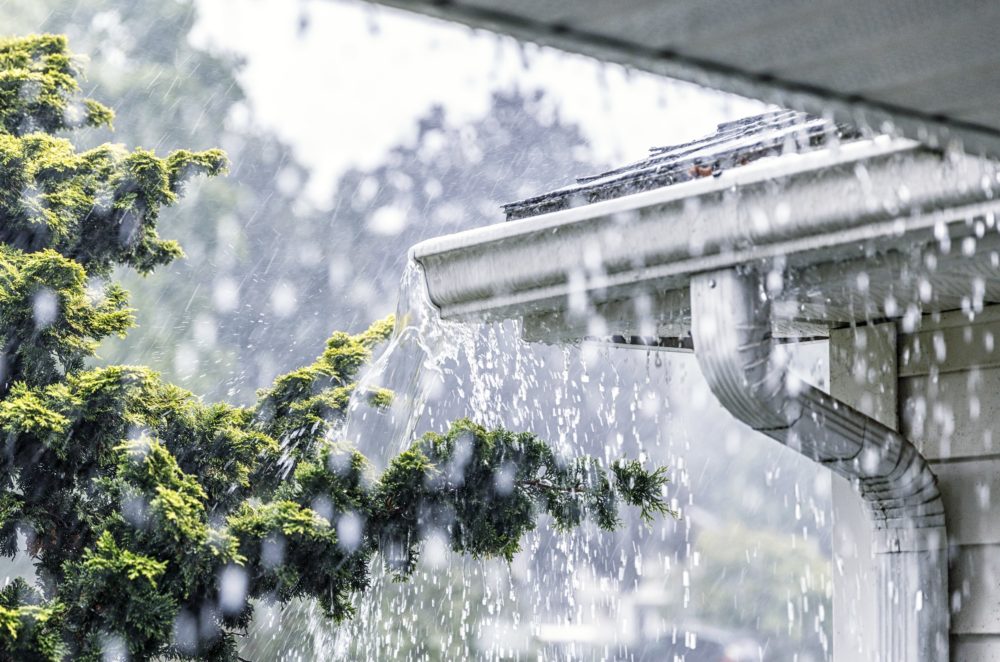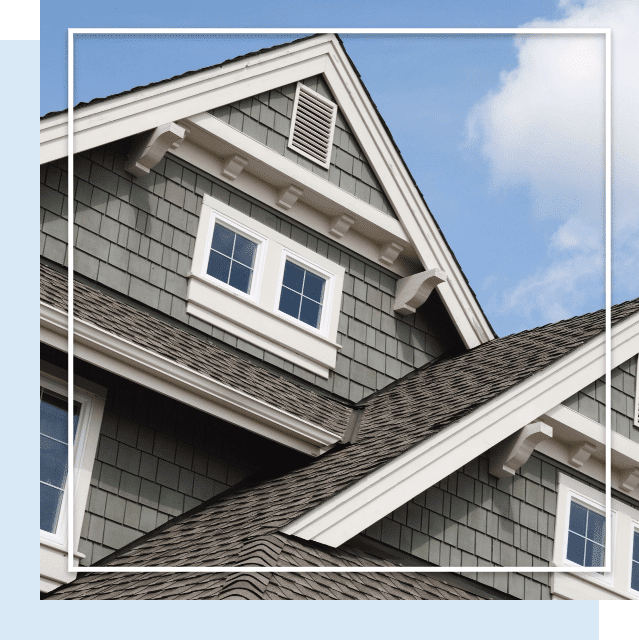The connection of gutter and downspout is crucial for the effective management of rainwater on any property. Gutters and downspouts work together to divert water away from a building’s foundation, walls, and landscape, preventing water damage, erosion, and basement flooding. Proper installation and maintenance of these components are essential for safeguarding the structural integrity and aesthetics of a home.
Gutters are channels that are installed along the edges of a roof to collect and direct rainwater or melting snow away from the house. Typically made from materials like aluminum, vinyl, or copper, gutters catch the water that runs off the roof and funnel it to the downspouts. The primary function of gutters is to prevent water from pouring off the eaves, where it can pool around the foundation and cause water damage or foundation issues.
Downspouts serve as the conduits that carry the water from the gutters down to the ground or drainage system. Attached vertically to the corners of a house, downspouts ensure that the water is directed away from the building’s foundation, minimizing the risk of water intrusion into the basement or crawl spaces. The effectiveness of the gutter system largely depends on the seamless connection and alignment between the gutters and the downspouts, highlighting the importance of their synergy in home maintenance.
Understanding Gutters
Gutters are integral components of a roofing system, designed to collect and channel rainwater or melting snow away from a building. These channels prevent water from spilling over the roof edges, thereby protecting the siding, windows, doors, and foundation from water damage. The role of gutters is to ensure that water flows efficiently toward downspouts, which then expel the water safely away from the property’s structural base.
Several types of gutters are available, each suited for different architectural styles and climate conditions. The most commonly used gutters in residential and commercial properties include:
- K-style gutters: Recognized by their decorative front that resembles crown molding, these gutters are popular due to their high capacity and resistance to clogging.
- Half-round gutters: These are shaped like a tube cut in half and are often found on older, historical homes. They are less prone to corrosion and offer a traditional appearance.
- Box gutters: Larger and more robust, box gutters are typically used in commercial properties. They handle larger volumes of water, making them suitable for big structures with expansive roof areas.
Selecting the right type of gutter involves considering factors like roof size, local weather conditions, and aesthetic preferences to ensure optimal water management and protection for the property.

Understanding Downspouts
Downspouts are essential components of a gutter system, responsible for directing the water collected from gutters to the ground or into a drainage system safely away from the building. They prevent water from pooling around a building’s foundation, which can lead to structural damage over time. The effectiveness of downspouts is crucial for the overall functionality of the roofing and water management system, ensuring that excess water does not compromise the integrity of the structure.
Materials commonly used for downspouts include:
- Aluminum: Popular for its lightweight and rust-resistant properties, aluminum downspouts are versatile and can be matched with any gutter system.
- Vinyl: Known for their ease of installation and minimal maintenance, vinyl downspouts are cost-effective and resistant to corrosion.
- Copper: Chosen for their durability and aesthetic appeal, copper downspouts develop a patina over time that can add character to the property’s exterior.
- Steel: Often used for commercial buildings, steel downspouts are extremely durable and can handle large volumes of water.
Downspouts are available in various shapes, including round, square, and rectangular profiles, each offering different benefits. Round downspouts are typically more efficient at preventing clogs, while square and rectangular downspouts can handle more significant volumes of water and are easier to connect with the gutters. The choice of material and shape of downspouts depends largely on the specific needs of the property, taking into account factors such as climate, building design, and budget.

How Gutters and Downspouts Work Together
Gutters and downspouts form a synergistic system that plays a critical role in roofing and water management. Gutters are strategically placed along the roof’s edges to catch rainwater as it flows off the shingles. The design of the gutters ensures that water is channeled towards downspouts, which are usually located at the corners of the building. This systematic routing of water is crucial to preventing the accumulation of water around the foundation, which can lead to structural issues and water damage over time.
The connection points between gutters and downspouts are pivotal for the smooth operation of this water diversion system. These points must be securely fastened and sealed to prevent leaks. They are typically equipped with various fittings, such as elbows and drop outlets, which facilitate the precise flow of water from the gutters into the downspouts. Proper alignment and installation at these connection points ensure that water flows efficiently and without obstruction.
Maintaining these connection points is essential for the longevity and effectiveness of gutter systems. Regular inspections are necessary to identify and rectify potential issues such as clogs, leaks, or misalignments. Cleaning gutters and downspouts annually or semi-annually helps prevent blockages from leaves and debris, which can impede water flow and cause overflow. Additionally, checking the fasteners and seals during maintenance visits ensures that the entire system remains operational and effective in protecting the property from water damage.
Common Problems and Solutions
Several issues can arise at the connection points between gutters and downspouts, impacting the efficiency of water management systems. Identifying these problems early and implementing solutions is key to maintaining the integrity of a property’s exterior and foundation.

Common Problems:
- Clogs: Leaves, twigs, and debris can accumulate, causing blockages at the connection points.
- Leaks: Poorly sealed connections can lead to water dripping or flowing in unwanted areas.
- Misalignment: Gutters and downspouts that are not properly aligned prevent effective water flow and can cause overflow.
- Corrosion: Over time, certain materials may corrode, weakening the connection points and leading to failures.
Solutions and Preventative Maintenance Tips:
- Regular Cleaning: Clear gutters and downspouts of debris at least twice a year to prevent clogs.
- Sealant Application: Apply waterproof sealant at the connection points to address and prevent leaks.
- Alignment Checks: During routine inspections, ensure that all components are correctly aligned and adjust as necessary.
- Corrosion Protection: Use rust-resistant materials and coatings to prevent corrosion and prolong the life of gutters and downspouts.
- Professional Inspections: Schedule annual inspections with a professional to identify and fix issues before they lead to significant damage.
Implementing these solutions and adhering to a regular maintenance schedule can greatly reduce the likelihood of problems at the connection points, ensuring that gutters and downspouts function effectively and protect the property from water-related damage.
Installation and Maintenance Best Practices
Proper installation and regular maintenance of gutters and downspouts are critical for ensuring efficient water flow and prolonging the system’s lifespan. Following best practices in both areas can significantly reduce the risk of blockages and leaks, which are common issues in poorly maintained water diversion systems.
Installation Guidelines:
- Accurate Measurements: Ensure that gutters are measured precisely to fit the house dimensions. Incorrect measurements can lead to poor water flow and leaks.
- Proper Slope: Install gutters with a slight slope towards the downspouts. This ensures that water flows smoothly and does not pool in the gutters.
- Secure Fastening: Use sturdy brackets and screws to secure the gutters and downspouts to the house. This prevents sagging and detachment.
- Quality Materials: Choose high-quality, durable materials that can withstand local weather conditions, reducing the need for frequent replacements.
Maintenance Tips:
- Biannual Cleaning: Clean gutters and downspouts in the spring and fall to remove leaves and debris that can cause blockages.
- Inspect for Damage: Regularly inspect for signs of wear, such as rust or holes, and repair or replace damaged sections promptly.
- Check for Leaks: After cleaning, flush the gutters and downspouts with water to check for leaks at the joints and connections.
- Install Guards: Consider installing gutter guards to reduce the amount of debris that enters the gutters, thereby minimizing maintenance needs.
Adhering to these installation and maintenance best practices, homeowners can ensure that their gutter systems operate effectively and efficiently, protecting their property from water damage and contributing to a well-maintained home exterior.

The Impact of Improper Installation or Failure
When the connection between gutters and downspouts is compromised, several significant issues can arise, leading to water damage and structural problems. Proper installation and maintenance are crucial for avoiding these costly and potentially hazardous conditions.
Consequences of Improper Installation or Failure:
- Water Damage to the Foundation: If gutters and downspouts do not properly channel water away from the home, it can pool around the foundation. This water can seep into the basement or crawl spaces, leading to mold growth and weakening of the foundation walls.
- Siding and Window Damage: Overflowing gutters can cause water to run down the sides of a home, leading to water infiltration in windows and damage to siding materials.
- Landscape Erosion: Excessive water flow that is not properly directed can erode gardens, destroy landscaping, and create uneven ground that poses tripping hazards.
Examples of Structural Issues:
- Roof Damage: Water backing up in gutters can lead to ice damming and roof damage, particularly in colder climates.
- Sagging or Detached Gutters: Heavy, water-logged gutters can sag or detach from the house if not properly secured, leading to costly repairs.
- Rot and Decay: Persistent moisture from improper drainage can cause wooden elements of the house, such as fascia boards, to rot.
Ensuring that gutters and downspouts are properly installed and maintained mitigates these risks, preserving the structural integrity of the property and maintaining its aesthetic appeal. Regular checks and prompt repairs at the first sign of trouble can prevent minor issues from becoming major problems.
Final Thoughts
The proper connection between gutters and downspouts is essential for the efficient management of water around your property. Ensuring that these systems are correctly installed and maintained not only protects your home from potential water damage but also preserves the structural integrity and aesthetic value of your property. Regular inspections and proactive maintenance are key strategies to prevent issues that could lead to costly repairs.
CMW Roofing and Siding, a trusted roofing and siding company based in Monroe, CT, specializes in providing top-quality gutter and downspout installation and maintenance services. We understand the critical role these systems play in home maintenance and are committed to ensuring your home’s roofing and siding are in the best condition.
We encourage homeowners to schedule regular inspections and maintenance checks with our skilled professionals. For more information or to schedule a consultation, please contact CMW Roofing and Siding. To further assist you in understanding the care and maintenance of your gutters and downspouts, explore our range of related articles and guides on gutter and downspout maintenance.
FAQ:
What are the Functions of a Downspout?
Downspouts serve a critical function in a gutter system, directing water from the gutters to the ground or into a designated drainage area. They help prevent water from pooling on the roof or around the foundation, protecting structural elements and landscaping from water damage.
What Happens Without a Downspout?
Without downspouts, water from gutters would spill over the sides, potentially damaging the building’s foundation, landscaping, and exterior surfaces. This can lead to basement flooding, soil erosion around the property, and damage to siding and windows.
How Do You Control Water from a Downspout?
Water from downspouts can be controlled using extensions or splash blocks, which help direct the flow away from the property’s foundation. For more controlled drainage, homeowners might consider installing a rain barrel to collect water or connecting the downspout to a dry well or rain garden.
How Many Downspouts Do You Need?
The number of downspouts required depends on the roof size and the volume of water that needs to be managed. Generally, one downspout should be installed for every 20 to 30 feet of gutter length to ensure efficient water diversion and prevent gutter overflow.
How to Improve Gutter Downspout Drainage?
Improving gutter downspout drainage can be achieved by ensuring that downspouts extend at least 5 feet from the house foundation. Installing gutter guards to prevent clogging and checking the slope of gutters for proper water flow also enhance drainage efficiency. Regularly cleaning gutters and downspouts is essential to maintain optimal performance.
